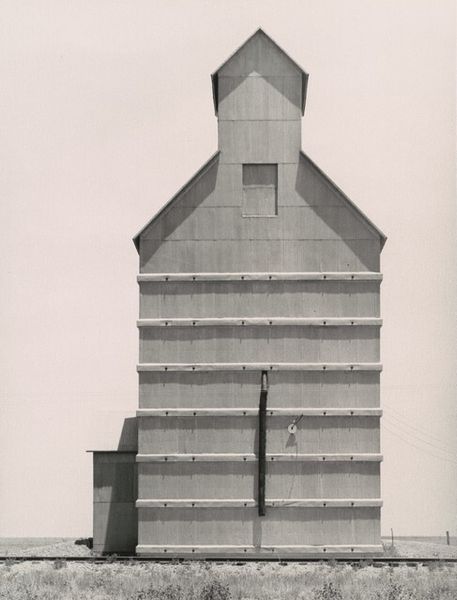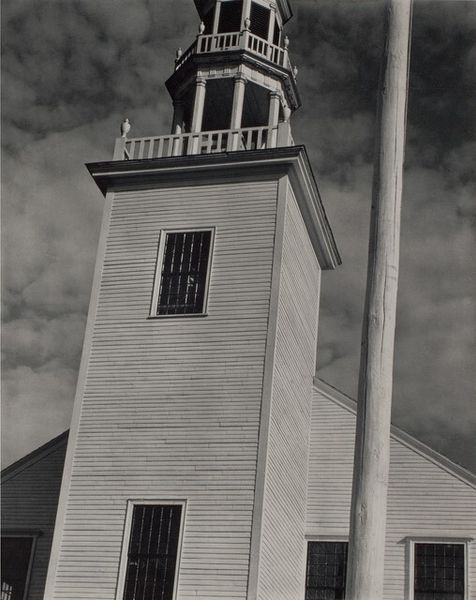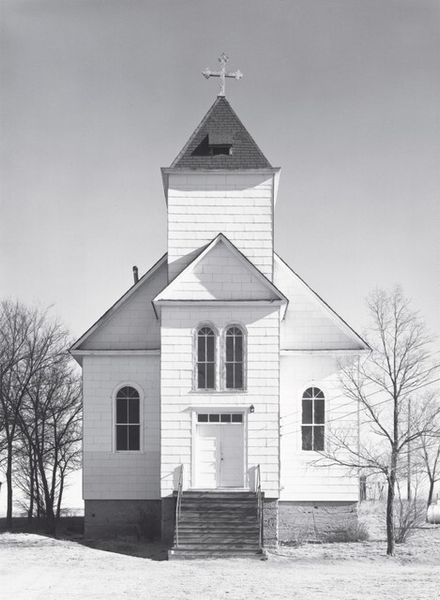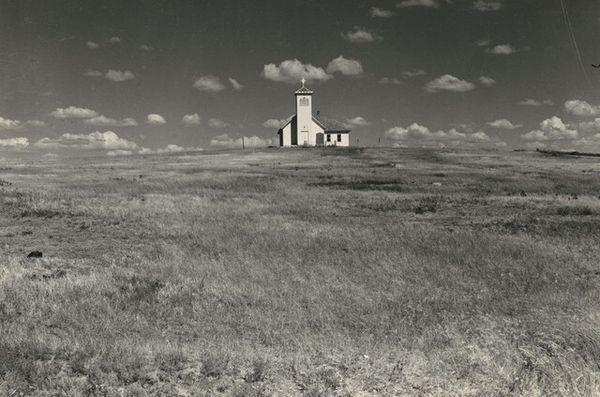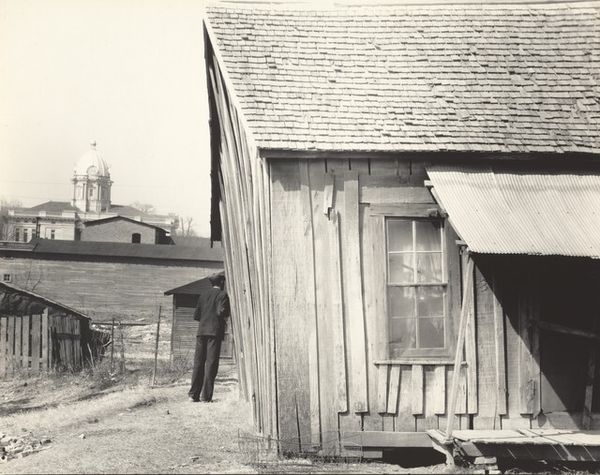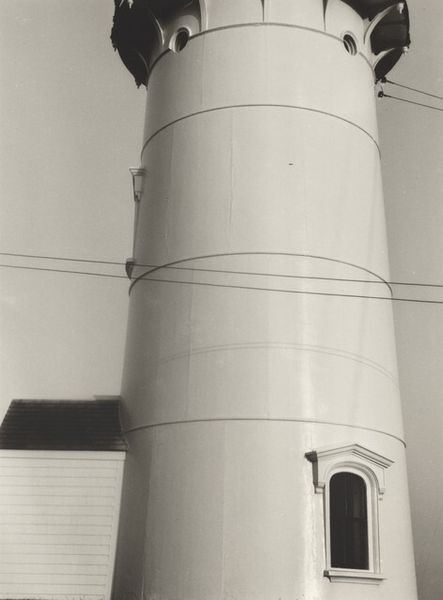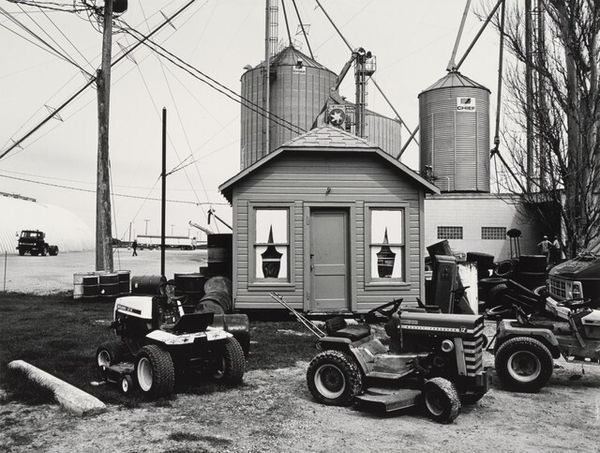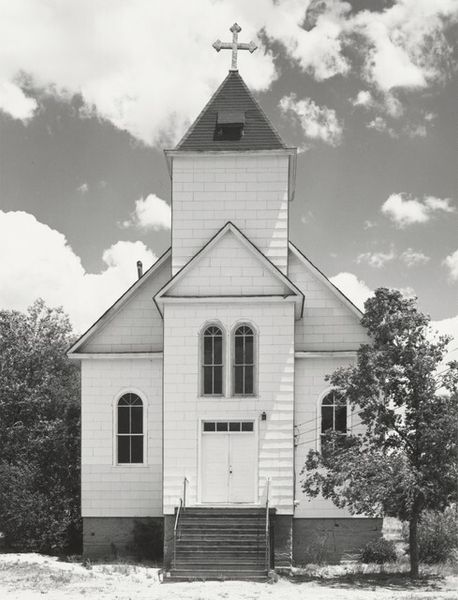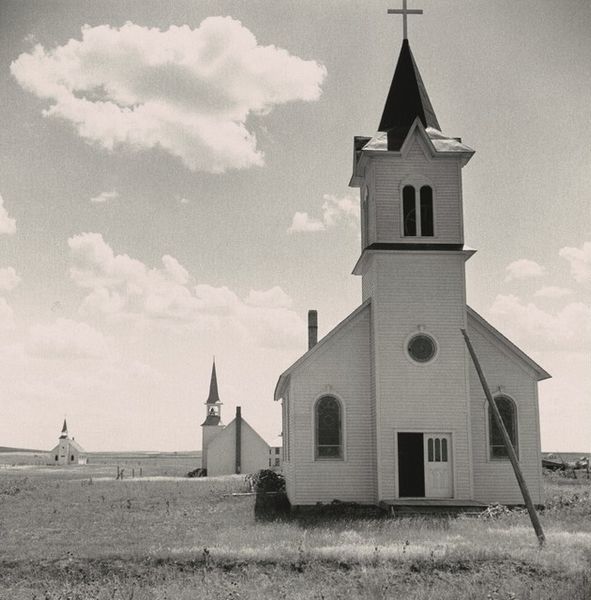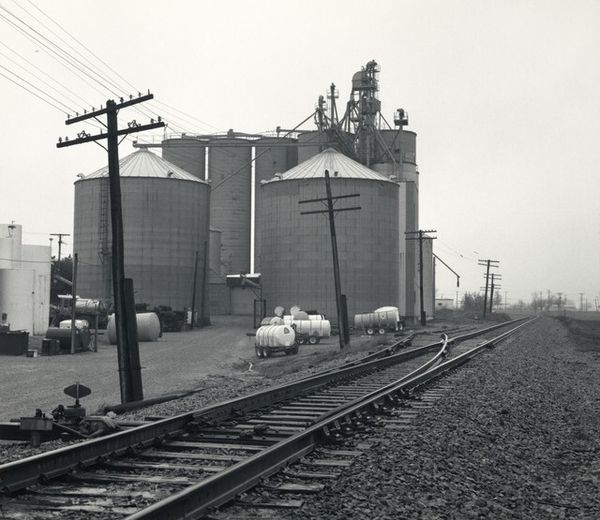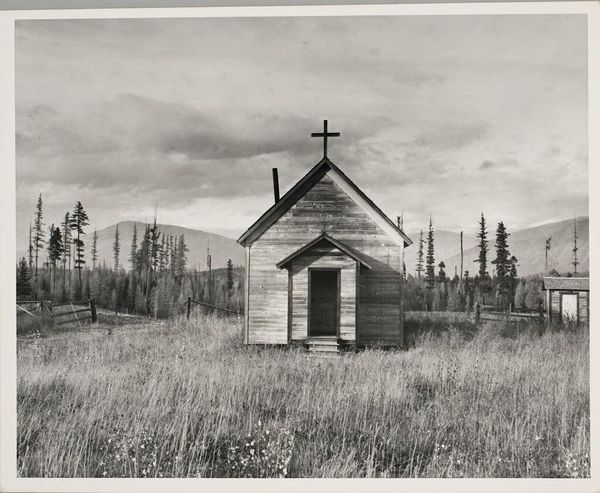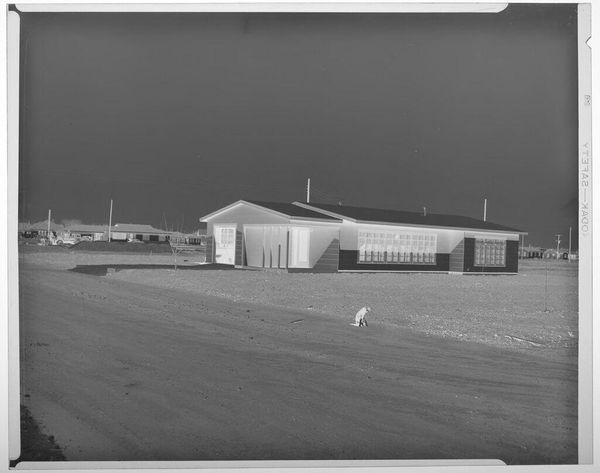
photography
#
photorealism
#
black and white photography
#
landscape
#
outdoor photograph
#
black and white format
#
photography
#
black and white
#
monochrome photography
#
monochrome
#
historical building
Dimensions: image/sheet: 25.3 × 32.7 cm (9 15/16 × 12 7/8 in.)
Copyright: National Gallery of Art: CC0 1.0
Editor: This is "Wheat Elevator, Latah County, Idaho," a 1941 photograph by Russell Lee. The stark black and white and the massive architecture create such a feeling of monumental stillness. How do you interpret this work? Curator: It’s impossible to look at Lee’s work without acknowledging the context of the Farm Security Administration. The FSA documented rural poverty during the Depression, but more than that, they were also crafting a narrative about American identity. Editor: A narrative? What do you mean? Curator: The image presents an almost heroic view of rural infrastructure, despite the struggles faced by farmers during this era. The monumental scale speaks to the promise of industrial agriculture. Who benefits and who suffers when that promise is realized? Editor: That makes me think about labor—who built these elevators and who profited from them? And the ad for Chesterfield cigarettes feels deliberately placed… Curator: Exactly! It begs us to consider the economic forces at play, the systems of extraction and consumption inherent in American capitalism. Even the land is being mined, no? Editor: I hadn’t thought about the layers of meaning embedded within what seemed like a simple photograph. Curator: It's a powerful example of how photography can be both documentary and deeply political, reflecting the complex intersections of agriculture, labor, and the American Dream. It makes you consider that “Dream” more critically, right? Editor: Absolutely. I’ll never look at a landscape photograph the same way again!
Comments
No comments
Be the first to comment and join the conversation on the ultimate creative platform.
